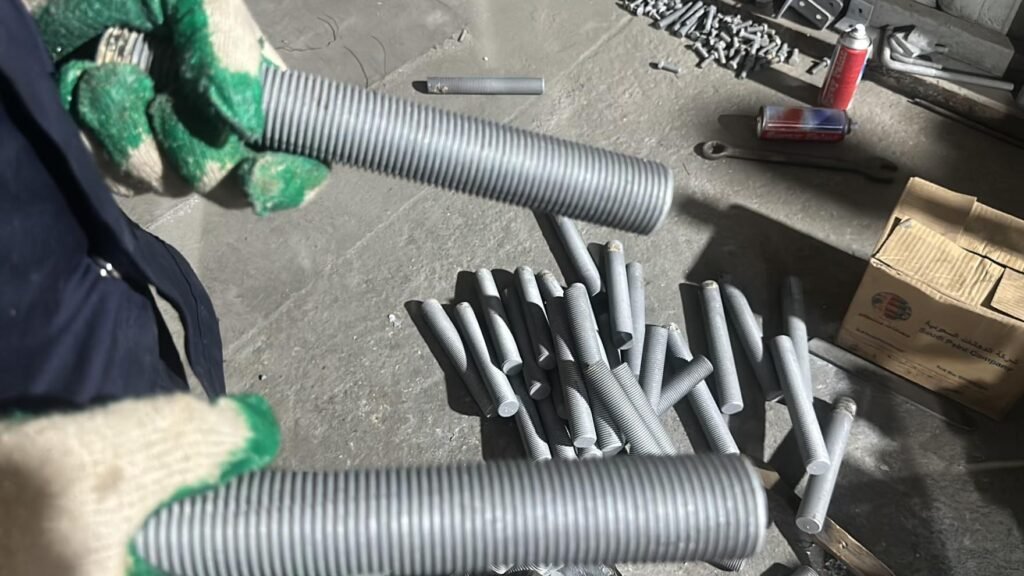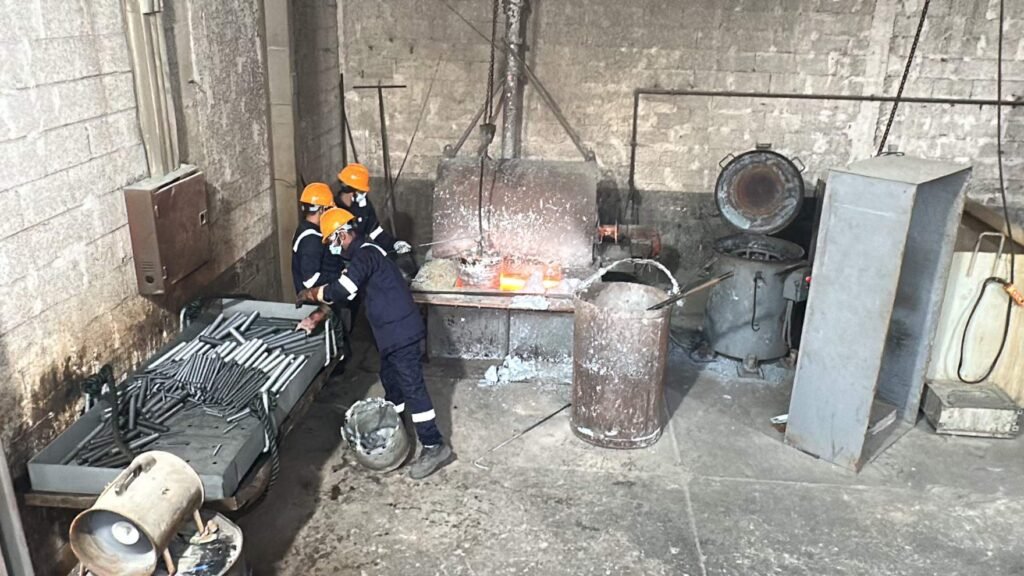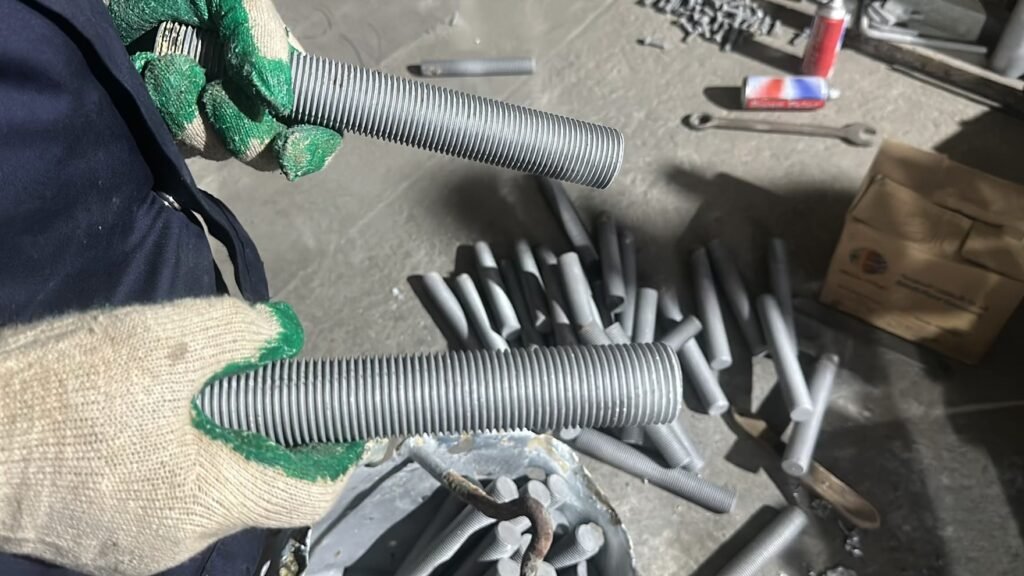Galvanizing Process
/ Service Details
Galvanizing Process
Surface Preparation
This crucial step ensures a good bond between the steel and the zinc coating. It involves several stages:
Degreasing: A hot alkaline solution, mild acid bath, or biological cleaning removes oil, grease, and dirt from the steel surface.
Rinsing: Removes any cleaning solution residue.
Pickling: Dipping the steel in an acidic solution (sulfuric or hydrochloric acid) removes mill scale and rust (iron oxides).
Rinsing Again: Removes pickling acid.
Fluxing: Applying a zinc ammonium chloride solution helps prevent oxidation and promotes even zinc coating.
Drying: Removes any remaining moisture.


Galvanizing
Immersion: The clean, dry steel is submerged entirely in a molten zinc bath at around 449 °C (840 °F). Reaction: Zinc metallurgically reacts with the iron in the steel to form a multi-layered zinc-iron alloy coating. This happens rapidly at first, then slows down. Withdrawal: The steel is carefully removed from the zinc bath.
Post-Treatment
Cooling: The galvanized steel is allowed to cool naturally in air or quenched in water for faster cooling (depending on the desired finish).
Inspection: The coating thickness, uniformity, and appearance are inspected to ensure quality.
Additional Points:
Coating Thickness: The thickness of the zinc coating depends on the steel application and desired lifespan. Standards like ASTM International provide guidelines.
Environmental Considerations: Hot-dip galvanizing can generate fumes and wastewater. Reputable galvanizers implement measures to minimize environmental impact.

Benefits of Hot Dip Galvanizing
Excellent Corrosion Protection: The zinc layer acts as a sacrificial barrier, protecting the steel underneath.
Durable and Long-Lasting: Hot-dip galvanized steel can offer decades of corrosion protection.
Cost-Effective: Compared to other corrosion protection methods, hot-dip galvanizing offers a good balance of cost and performance.
Versatility: Hot-dip galvanizing can be applied to various steel shapes and sizes.
Challenges with Small Parts in Hot-Dip Galvanizing:
Excess Zinc Buildup: When small parts are dipped in the molten zinc bath, they tend to retain more zinc than desired.
This can lead to:
Uneven Coating: A thick, lumpy coating can form, especially in tight spaces like threads or holes.
Sticking: Parts may stick together due to the excess zinc acting like glue.
Benefits of Centrifuging
Removes Excess Zinc: After the hot-dip process, the basket containing the small parts is spun at high speed in a centrifuge. This centrifugal force throws off the excess zinc that didn't bond properly to the steel.
Uniform Coating: By removing the excess, centrifuging helps achieve a thinner, more even zinc coating on the parts.
Prevents Sticking: The force also helps break any potential bonds between parts, preventing them from sticking together.
Improved Functionality: A smoother, thinner coating ensures parts with threads, hinges, or other moving components function properly.
Overall, centrifuging in hot-dip galvanizing for small parts leads to:
Higher Quality Finish: A more uniform and aesthetically pleasing appearance.
Improved Functionality: Parts function as intended without issues like sticking or restricted movement.
Reduced Waste: Less wasted zinc means a more efficient process.

